The best Landmarks in The Philippines
The Philippines is a country in Southeast Asia known for its dreamy nature and climate. The county is composed of over 7,100 islands and is considered “Asia’s best-kept secret.” The average annual temperature in the Philippines ranges from 24-29°C, and its white beaches and stunning nature have made it a popular destination for tourists from all over the world. The history of the Philippines is as rich as it is complex. The country has captivating stories that span thousands of years. It’s everything from early settlers and grand trading empires to colonial epochs and revolutions. Thanks to its location, the Philippines has been a gathering point for cultures and civilizations. This has created a unique cultural heritage where Asian, Spanish, and American influences intertwine. This has resulted in a lot to see and do. Below, we have listed the most popular landmarks and best places to visit in the Philippines.
Banaue Rice Terraces

These fascinating rice terraces have become one of the Philippines’ most visited tourist attractions. It’s amazing to see these historical rice terraces that were built by the ancestors of the Igorot people, who constructed them with their bare hands. Rice is still cultivated in the fields, but nowadays, the Banaue Rice Terraces is primarily a tourist destination. The terraces are irrigated by an ancient irrigation system from the rainforests above the terraces.
The Rice Terraces of the Philippines were named a World Heritage Site by the UNESCO World Heritage Centre in 1995.
Metro Manila
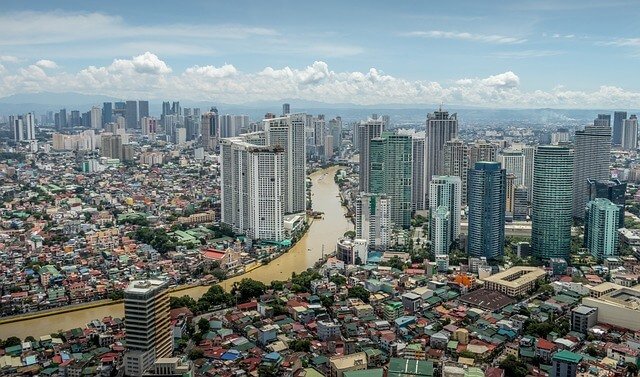

Metro Manila encompasses the capital city of the Philippines, Manila, along with 15 cities and 1 municipality surrounding Manila. Metro Manila is divided into 4 different districts, which are further divided into 17 smaller areas. In Metro Manila, over 12 million people live and it has become a popular travel destination for people worldwide. In the City of Manila, there are countless things to see and do. You can book a guided city tour and explore Manila’s history on foot, or take a guided bike tour to easily navigate the city and witness its fascinating history. Speaking of history, the National Museum Complex is well worth a visit.
Metro Manila is known for its food, especially its street food scene. Along the streets and in markets, you can find amazing authentic food that will make your taste buds dance with joy. In the city, you can also visit the famous Roxas Boulevard, and the Greenbelt Mall in Makati for shopping, and witness the breathtaking sunset over Manila Bay.
Rizal Park


Rizal Park, also known as Luneta Park, is one of the Philippines’ most important landmarks. The park was named after José Rizal, who is considered to be one of the biggest heroes of the Philippines and a major reason for Philippine independence.
The Philippines was ruled under the Mexico-based Viceroyalty of New Spain. After this, the colony was directly governed by Spain. Spanish rule ended in 1898. Rizal had an important role in the country and wrote books that inspired a lot of people to fight for the country to become independent. The national hero José P. Rizal was executed in 1896, and in 1901, the José Rizal Monument was built in his honor and became the historic landmark it is today.
Mount Mayon Volcano


One of the most famous landmarks in the Philippines is the stratovolcano Mount Mayon. The volcano is the most active volcano in the Philippines and it’s surrounded by a beautiful national park called Mayon Volcano Natural Park.
Mount Mayon is known for its characteristic cone shape and is often described as “the perfect cone.” The volcano reaches over 2,000 meters above sea level and has become a classic destination for photographers from around the world. Due to the volcano’s active nature, climbing to the summit is currently prohibited, but the view from below is equally impressive. This place is an experience, and Mount Mayon is truly one of the world’s natural wonders.
San Agustin Church


Built in 1607, the San Agustin Church is the oldest stone church in the entire country. In fact, this is the third church built on this site. The first church was constructed in 1571 using bamboo and nipa, but it was destroyed during the attempted invasion of Manila in 1574. It was soon rebuilt but burned down in 1583. The current church, made of stone, was then built and still stands today. Step inside the church and be greeted by the beautiful paintings on the altar, the intricate wood carvings, and the grand crystal chandeliers.
The beautifully adorned altar is also well-known and attracts many visitors. There is also a museum where you can delve deeper into the church’s history.
Taal Volcano
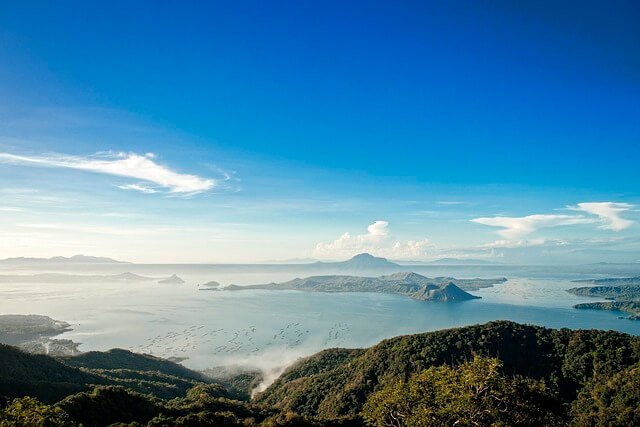

Taal Volcano is a large caldera filled by Taal Lake in the Philippines. This giant caldera was created through explosive eruptions between 140,000 and 5,380 years ago. The subsequent eruptions have formed a volcanic island inside the caldera, which is called Volcano Island.
The island is 5 kilometers long and covers an area of 23 square kilometers, situated in the middle of the lake. On Volcano Island, you’ll also find the Main Crater Lake, which is the largest lake on an island in a lake on an island in the world.
Volcano Island is considered a Permanent Danger Zone (PDZ), and it is prohibited to settle there. However, due to the fertile soil and fishing opportunities in the lakes, there are still locals living in the area. Taal Volcano is located about 50 kilometers south of Manila and is a fantastic place to visit.
Chocolate Hills


This surreal place with over 1000 similar limestone hills continues to puzzle researchers regarding their origin. Among all the Philippine landmarks, Chocolate Hills is definitely the most peculiar. The hills are approximately 30 to 50 meters high, with the tallest reaching 120 meters, and they stretch over 50 square kilometers.
The name comes from the appearance of the hills during the dry season when the plants and grass covering them take on a chocolate-colored tone. There are several viewpoints and platforms to stop and enjoy the fantastic landscape, and two of the hills have been developed into tourist resorts, allowing visitors to stay overnight surrounded by the chocolate-colored hills.
Walled City of Intramuros
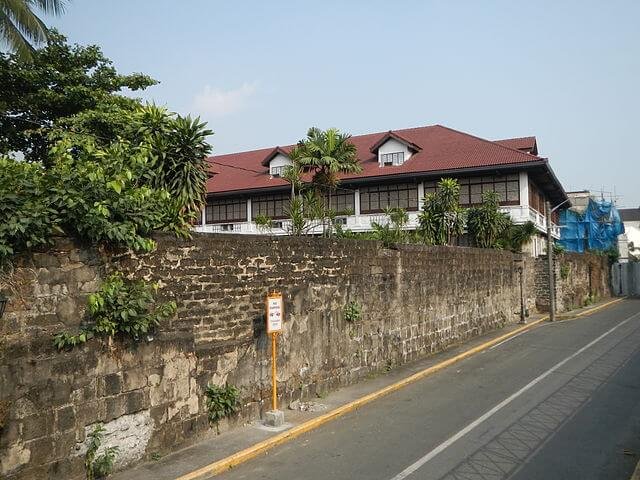

Intramuros, also known as “the Walled City,” is one of the oldest districts in Manila. It was primarily built as a defensive barrier against external threats by the Spaniards in 1571. Nowadays, the area is home to grand government offices, schools, parks, churches, and monasteries. Within Intramuros, you can find the ruins of Baluarte de San Diego, which is one of the most popular tourist attractions to visit.
Other popular tourist attractions within Intramuros include the Manila Cathedral and the Metropolitan Cathedral of the Immaculate Conception. This place is truly a piece of Philippine history!
Fort Santiago
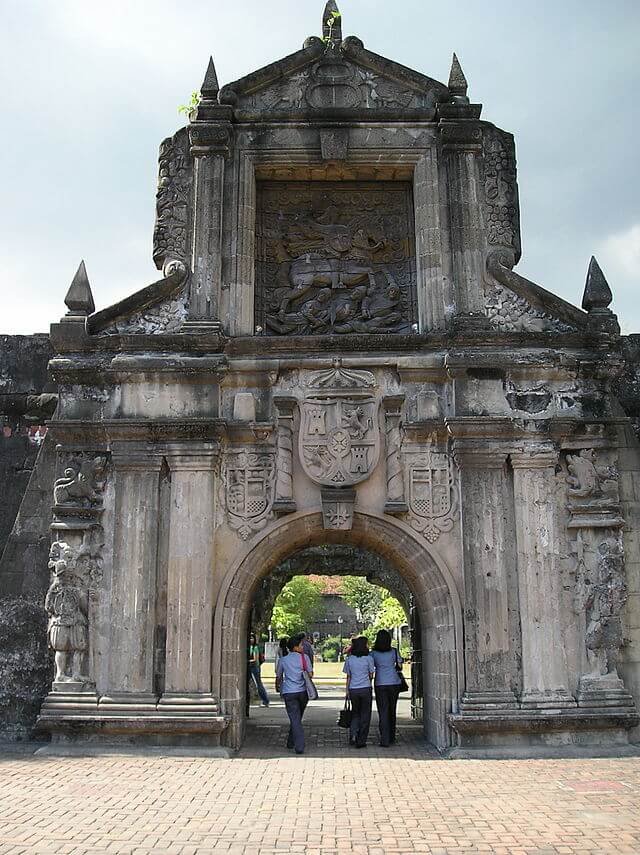

Fort Santiago was built in 1571 and is one of the Philippines’ most significant historical landmarks. The fort was constructed by the Spanish conqueror Miguel López de Legazpi as a defensive stronghold to protect the newly established state. In 1950, Fort Santiago was declared a Shrine of Freedom, and restoration work on the building commenced the following year.
Today, it stands as a poignant tribute to the victims of World War II and a testament to the unwavering resilience and sacrifices made by the Filipino people in their quest for freedom.
Cebu City
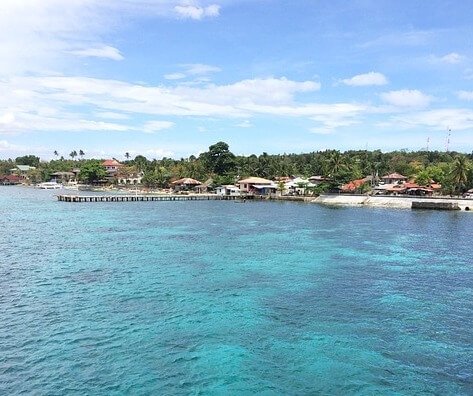

Cebu City is located on the eastern coast of the island of Cebu, offering a range of incredible attractions and beautiful beaches. The city is also home to some of the largest universities in the Philippines, attracting students from all over the country. In this city, you’ll find a plethora of top-quality pubs, restaurants, and nightclubs. Below, we have listed six things we recommend checking out while in Cebu City.
Things to explore in Cebu City:
• Fort San Pedro
• Snorkeling The Sardine Run In Moalboal
• Walk the 81 Steps of the Cebu Taoist Temple
• Water Adventures on Camotes Island
• Experience Canyoneering to Kawasan Falls
• Sky Experience Adventure
Quezon City
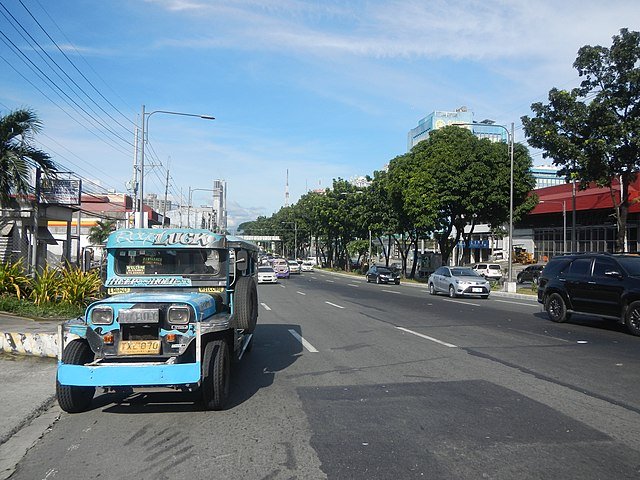

Quezon City pulsates with energy and offers an array of neighborhoods catering to diverse budgets and preferences. Quezon City was envisioned to become the future capital of the Philippines, replacing Manila. This was due to Manila’s congestion, housing shortage, and overcrowded streets.
Quezon City actually served as the capital of the Philippines from 1948 to 1976 before it was transferred back to Manila. The city is the most populous in the Philippines and offers something for everyone. Be sure to visit the magnificent Quezon Memorial Circle, a breathtaking national park.
The city also has a wild nightlife with bars, restaurants, and nightclubs. For shopping enthusiasts, there are many shopping malls, including the enormous TriNoma and SM City North EDSA.
Puerto Princesa Subterranean River National Park


The Puerto Princesa Subterranean River National Park showcases an awe-inspiring network of caves, untouched natural splendor with remarkable limestone karst formations, and thriving ancient forests. A classic activity to do here is to take a day tour, El Nido Island Tour, to explore the amazing environment and the famous limestone cliffs surrounding the river.
There is also the opportunity to travel along an underground river hidden within the network of caves. On November 11, 2011, the Puerto Princesa Underground River was initially selected as one of the New 7 Wonders of Nature. This designation was officially confirmed on January 28, 2012.
San Miguel
The district of San Miguel is home to Malacañang Palace, officially known as Malacañan Palace, which is the official residence and workplace of the President of the Philippines. This mighty building was built back in 1750 and is surrounded by an amazing garden called “Freedom Park”.
Aside from Malacañan Palace, San Miguel is known for its world-famous beer of the same name. One would think that the beer brewery “San Miguel” is of Spanish origin and to some extent it is. Originally from the Philippines, the San Miguel brewery was created by the emigrated Spaniards and it wasn’t until the late 1950s that the beer came to Europe.
Boracay Island


Boracay Island is a beautiful small island located north of the island of Panay. You could say that Boracay Island is the Philippines’ answer to Phuket or Bali. Due to tourism and the problems that come with too rapid an increase, the government had to stop all tourism to the island in April 2018 to deal with waste management, environmental problems, and illegal construction but reopened the island in October 2018.
The popular ‘White Beach’ attracts thousands of visitors every year and it’s easy to see why. A 4 km long beach, covered in white sand and surrounded by palm trees and cozy restaurants, this idyllic island has been repeatedly voted the best island in the world by Tripadvisor. Make sure to visit it if you can.
From Caticlan Jetty Port, you can take a 10-minute boat ride to get to Boracay Island.
Ilocos Sur
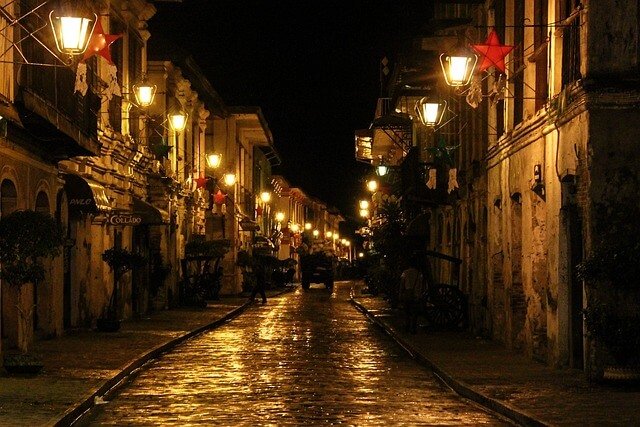

The Province of Ilocos Sur is located in the Ilocos Region in Luzon, Philippines. Within the province, you can find two distinguished UNESCO World Heritage Sites: the Heritage City of Vigan and the Baroque Church of Santa Maria. In addition to these, there are many other attractions and historical places to explore.
In the city of Vigan, you will find a highly popular pedestrian street called Calle Crislogo. Calle Crislogo is considered one of the most beautiful streets in the Philippines. With its centuries-old houses, antique cobblestones, and vibrant historical atmosphere, this 500-meter-long street is a must-visit when exploring Ilocos Sur. Surrounding Calle Crisologo, you will also find fantastic restaurants, souvenir shops, and cafes. It’s a good place to take a leisurely stroll and immerse yourself in the rich history of the area.
Tubbataha Reefs Natural Park


Tubbataha Reefs Natural Park is an over 97,000-hectare Marine Protected Area (MPA) and is one of the most popular dive sites in the world. In December 1997, UNESCO declared Tubbataha Reefs National Park a World Heritage Site due to its high density of marine species, with the northern atoll serving as a nesting site for birds and turtles.
The site also boasts an impressive coral reef that attracts thousands of divers each year with its vibrant colors. Over 1000 different species of marine life can be found swimming among the vivid corals that cover more than two-thirds of the area.
Leyte Landing Memorial Park


Leyte Landing Memorial Park is located in Palo, Leyte, and was created to honor the soldiers who fought for their freedom against the Japanese forces.
It was at this historical site that General Douglas MacArthur and his troops landed in 1944, uttering the famous words, “I have returned.”
A monument stands at the site, reminding people of the day when the Philippines became free from Japanese occupation.
Every year, a reenactment ceremony is held, recreating the landing and commemorating this memorable day. Surrounding the park is beautiful nature, and you can also enjoy the stunning view of the Pacific Ocean. This place is as beautiful as it is significant.
Check out our article: Top 17 Most Stunning Waterfalls in the Philippines.